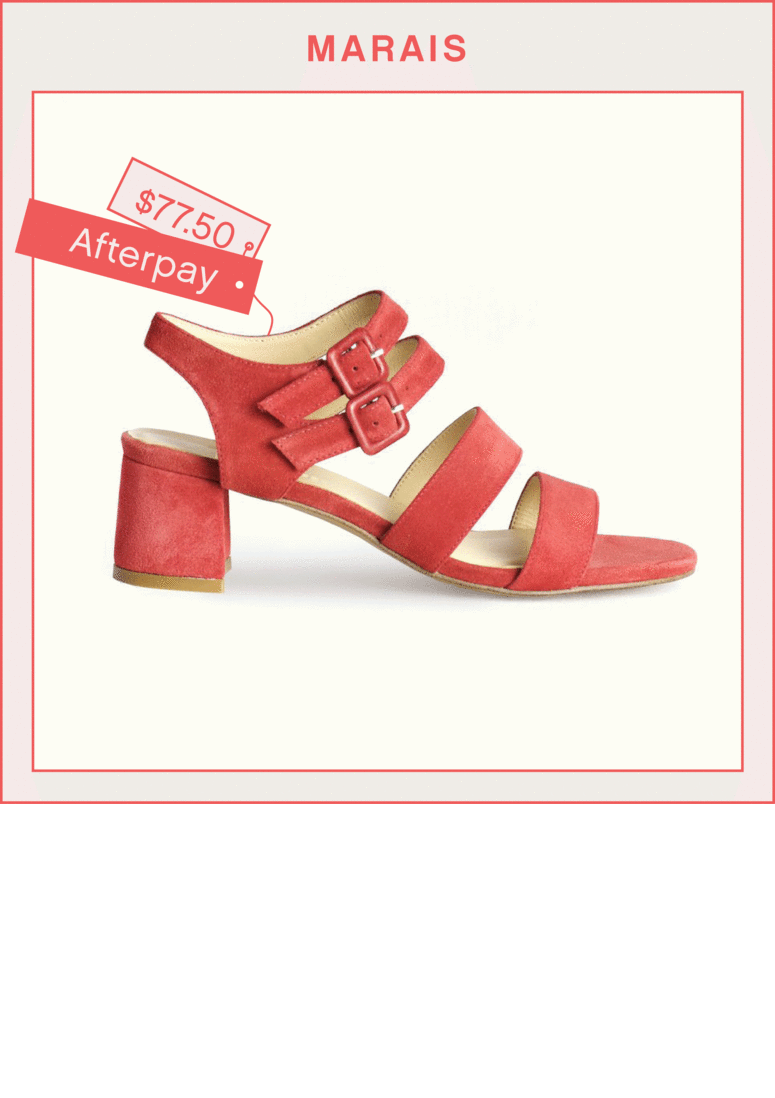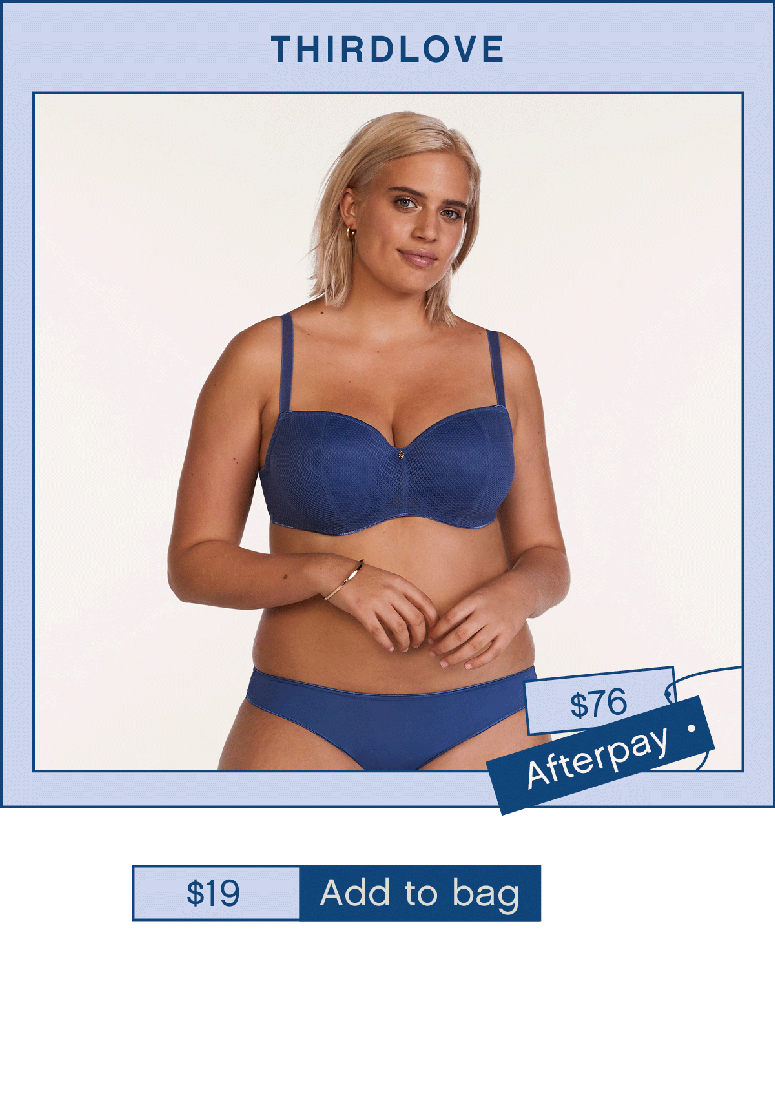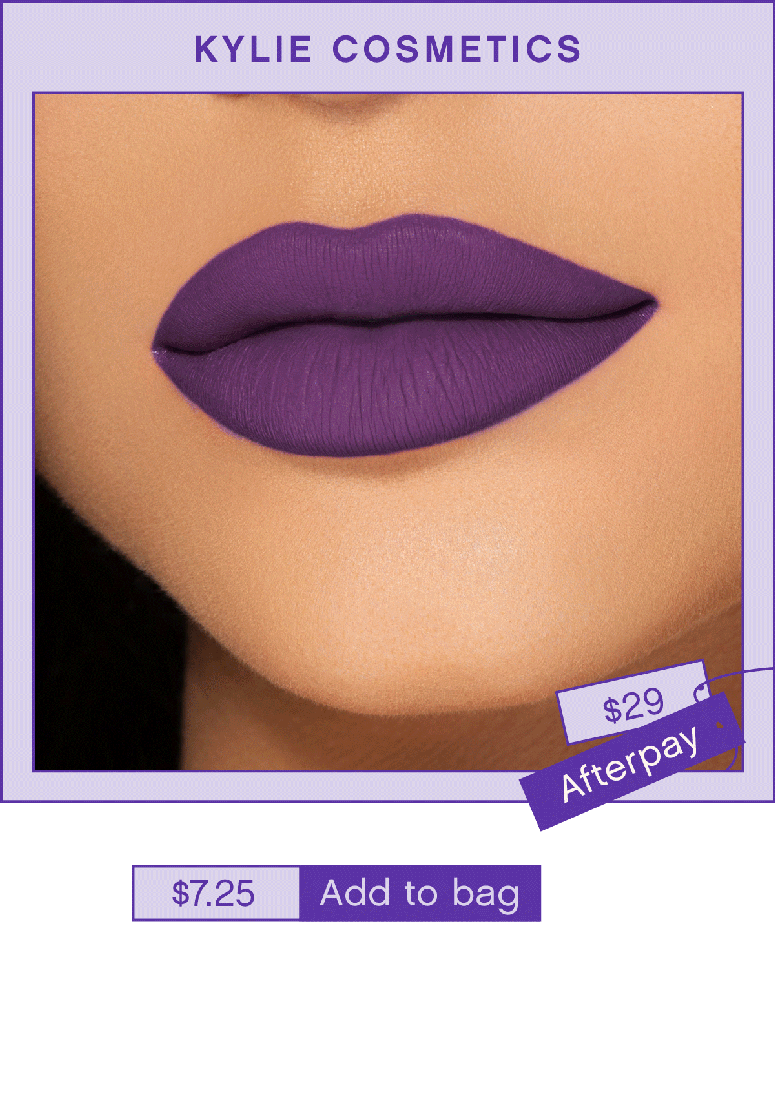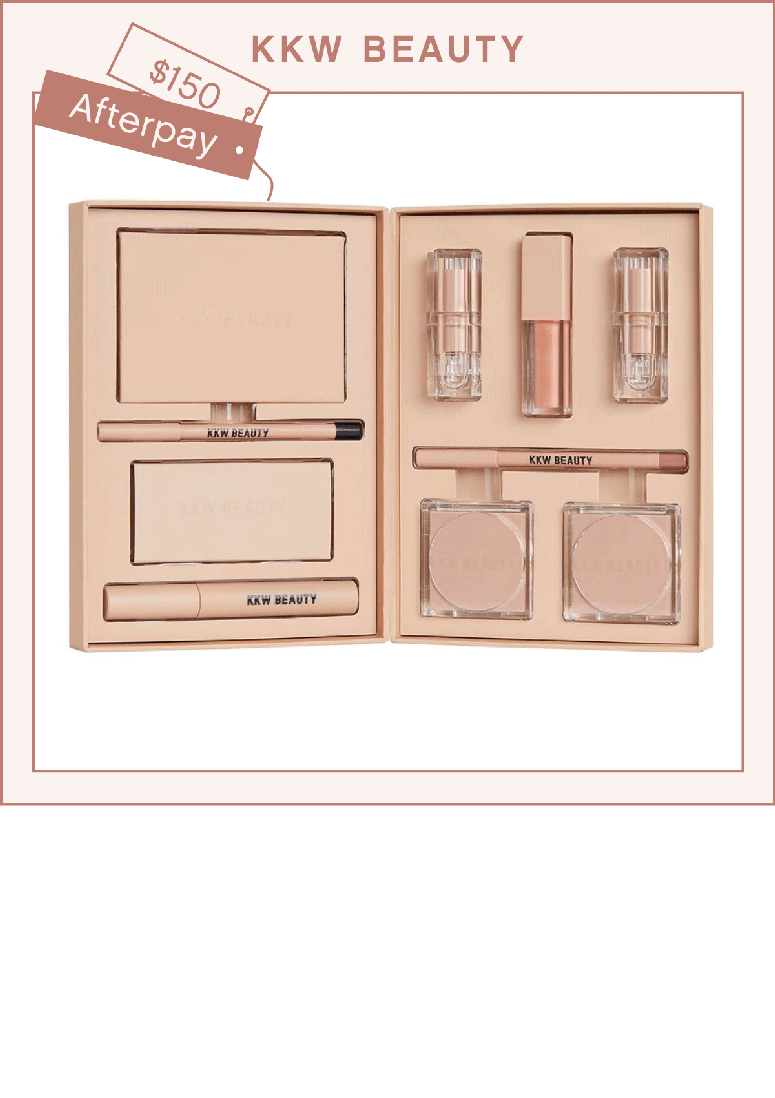Afterpay Is Making Layaway Sexy for Millennials—But What's the Real Cost?

For months, I lusted after the Marais USA jardin heel in cherry. The vintage-inspired suede sandals have the perfect pop of color that would zhuzh up an outfit. There was just one catch: the not-so-casual price of $310. But after about six months of wrestling with whether I should treat myself, I received an unexpected email, with the subject line in attention-getting all caps: “BUY NOW, PAY LATER.” The text was short and sweet: “Introducing Afterpay. Pay in four easy installments at no extra cost, simply select Afterpay at checkout.” Suddenly my dream shoes only cost an ever-so-tempting $77.50, in four interest-free payments.
I’d vaguely heard of Afterpay. Urban Outfitters had suggested it as an option at checkout when I was buying SZA’s “Ctrl” on vinyl, and I’d seen Kylie Cosmetics tweeting about it. Soon I was noticing it on other sites I browse, like Re/Done, Everlane, Cynthia Rowley, Free People—the list goes on.
You might also recognize the buy-now-pay-later idea by another name: layaway. Layaway programs actually became common in the 1930s, then faded away with the rise of credit cards, even though big chain stores like Sears or T.J. Maxx still offer installment payment plans. But with many of these services, a store reserved the goods for you; once the bill was paid you could finally take your purchase home.
Afterpay has given this old-school system a shiny, sexy, millennial rebrand with instant-gratification results. You pay for your purchases over four equal installments due every two weeks, and you get your items immediately. (The fine print: To be eligible for Afterpay, you have to be at least 18 years old, and own a debit or credit card. According to the company, first-time customers are typically given a $500 spending limit, and you can’t spend more than $1,500 through the service). While the payments are interest free, if you miss one installment, you’re charged $8. Don’t pony up by the following week, they tack on another $8, etc.
There’s a bevy of installment plans out there now, including QuadPay, Affirm, Uplift, and Klarna, but Afterpay is quickly becoming the most popular. The company says that they have more than 1,000 American retail partners and approximately 500,000 U.S. customers—mostly women—who have used the service. Those numbers are likely to climb: In Australia, where the company launched just four years ago, more than 25 percent of all online fashion and beauty purchases are now processed with Afterpay, according to Nick Molnar, Afterpay’s CEO and co-founder. Molnar told Glamour that the company decided to expand into the U.S. because they saw similar potential in the States and that, as a millennial himself, he knew people were searching for new payment options—without credit cards. “We need mechanisms [like Afterpay] to budget using our own money and to take control of our financial situation,” he says.
Millennials have already been trying to take control of their finances. Only one out of three of them has a credit card, and they use debit cards for purchases more than other forms of payment. Experts say this could be a reaction to the 2008 recession—this age group is wary about getting in financial trouble—and overwhelming student loans. “There’s an overall shift in millennials’ attitudes toward credit cards because of student debt [which 41 percent of them carry],” says Rebecca Liebman, co-founder and CEO of LearnLux, a digital platform which helps young adults make better financial decisions. “A lot of people don’t want to get into even more debt, and that’s exactly what they associate credit cards with.”

Several young women told Glamour they are suspicious of using credit cards, and many said they’d never had one. “I only use my debit card,” says Naila, a 21-year-old student in Lincoln, Nebraska. “I just don’t trust myself to have a credit card.” Instead of charging her purchases and then paying them off over time on credit with interest, Naila has used Afterpay to buy a light red Fjällräven backpack ($80 over four payments of $20), and new snakeskin mules from Anthropologie ($108, paid in four installments of $27).
Most of the women I spoke to didn’t go out seeking a payment plan. They were just aimlessly online shopping when they stumbled upon this new option they’d never heard of before. And for many, in that instant the clothes and products that seemed out of reach suddenly felt affordable. Christina, a 29-year-old mom of two and aspiring beauty blogger living in New York, first learned about the service from Kylie Jenner. “I remember when she announced on social that Kylie Cosmetics would have Afterpay I was so excited because I was like, ‘Wow, Kylie’s products are so expensive!’ And I’m like, I want a palette but I don’t feel like dropping $60 on something I never use,” she says. But Afterpay gave her a way—and since then she’s used it to score a Jaclyn Hill kit from Morphe and other luxe lipsticks.
That’s why payment models are appealing to stores, too. “For a lot of our customers, spending $300 on a pair of shoes is a splurge,” says Haley Boyd, the founder of Marais USA shoes. Afterpay, she says, “really eases their purchasing power.” Many retailers report a significant uptick in orders with Afterpay, though Boyd says she has yet to see a significant boost.
Alejandra, 23, a student in Salem, Oregon, admits she’s “super bad” with credit cards. “I would just rack up purchases, then max out [my card], and at the end of the day I got myself into a hole.” But when Revolve introduced Afterpay, Alejandra still signed up, bought a leopard print jacket, and has been using the service ever since. In two months she’s spent about $700 on things like, “an Urban Outfitters record player for my boyfriend, along with some records, and a few NASA t-shirts, then Gisou hair oil for myself,” she says.

While all of the women I spoke with are happy with their new loot, they realize that that without Afterpay, they probably wouldn’t have been able to afford their purchases. Simone, an avid Australian Afterpay user since 2016—who provides it as an option for her own clothing company, Simone Tylee, and attributes a third of her sales to the service—acknowledges that having the option to pay in installments has made her hit “buy now” on some things she wouldn’t normally. “I’ve used Afterpay for $2,610 worth of purchases. But if I hadn’t looked that up, I probably would’ve guessed I’d spent only $1,000,” she says. “In most of those cases I would’ve been more conscious about my choices if it weren’t for Afterpay. As a self-employed adult paying for a car loan, rent, fuel, groceries, and other bills each week, I don’t believe I would’ve been able to afford these things upfront.”
Hefzi, 20, a lunch supervisor at an Elton, Illinois, elementary school says using Afterpay to shop, “makes me feel a bit less guilty [about spending], because I’m not paying in full [right away],” she says. This is something Terrence Shulman, the founder of The Shulman Center for Compulsive Theft, Spending and Hoarding, has seen with shoppers (even those who don’t have addictive spending habits). “Gimmicks like Afterpay make you think, ‘Ok, I’m not just whipping out a credit card and paying for this all at once.’ The psychology is similar to things like flash sales or offers to make a purchase without interest for a year,” he says. “But that still doesn’t mean you can actually afford it. You feel like you’re getting a deal and that’s very seductive—but it doesn’t mean you’re not spending above your means.”
While financial experts I spoke to said that Afterpay could be better than a credit card because there’s no interest, they were all very wary of the service. For one, those late fees still add up. Afterpay made $28.4 million, or one-quarter of their overall earnings, off those fees last year. And in Australia, users of buy-now-pay-later companies owe more than a whopping $900 million. The Australian Securities & Investments Commission also found that, “one in six buy now pay later users (16 percent) believed they had experienced at least one type of negative impact due to a buy now pay later arrangement. This included becoming overdrawn, delaying bill payments, and borrowing additional money from family, friends or another loan provider.” (Afterpay is too new the U.S. to have similar data here.)

But most of all, financial experts worry that Afterpay and its cousins only teach us to live outside our means. “When it comes to discretionary spending on things like makeup, clothes, jewelry and other non-essentials, I don’t recommend using any form of payment plan. Even a credit card,” says Stefanie O’Connell, a millennial personal finance author. “Afterpay is disturbing because it gets you into the habit of spending money you don’t have. There’s nothing wrong with the occasional luxury splurge, but if you can’t afford it—meaning you can’t afford to fund the entire purchase when you make it—it’s not worth the tradeoff of putting yourself in a position where you might have to incur additional debt or leave yourself vulnerable if an unexpected expense or emergency arises.” We need to get real about our spending: If there’s not enough in your account for the cult classic Mansur Gavriel bucket bag, empty your cart, log off the Afterpay app, and step away from the computer—no matter how alluring those four small payments look. Your savings, and your future self, will thank you.
I haven’t taken the plunge and purchased the Marais heels. Not just because it’s winter here in New York, but because I know that my bank statement at the end of says I can’t afford them. But I did recently get a call from my 20-year-old little sister who was giddy to tell me that she finally bought the out-of-her-price-range $150 KKW Beauty Glam Bible Bundle—thanks to Afterpay. And another user is born.
Samantha Leach is an assistant editor at Glamour.
